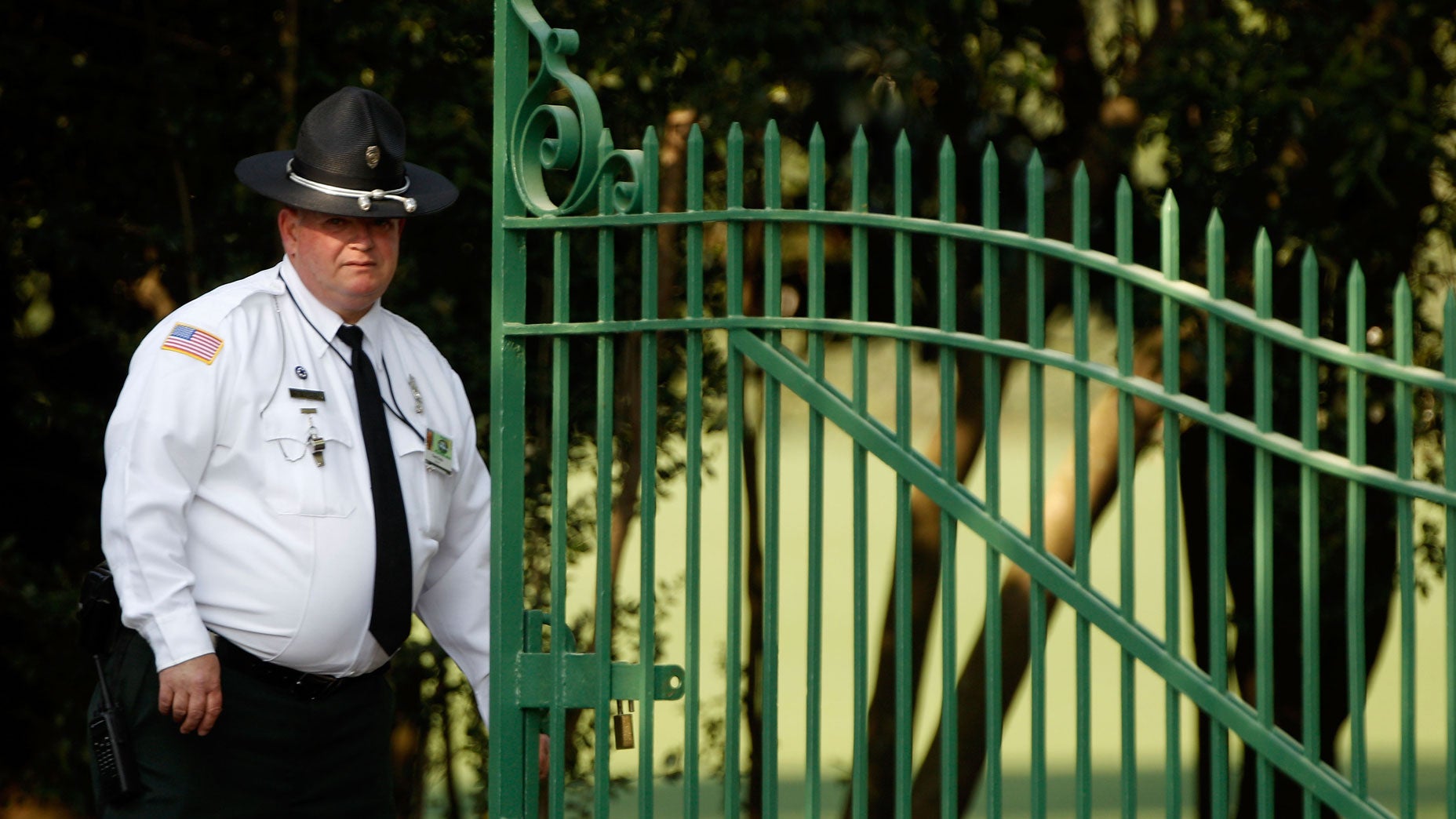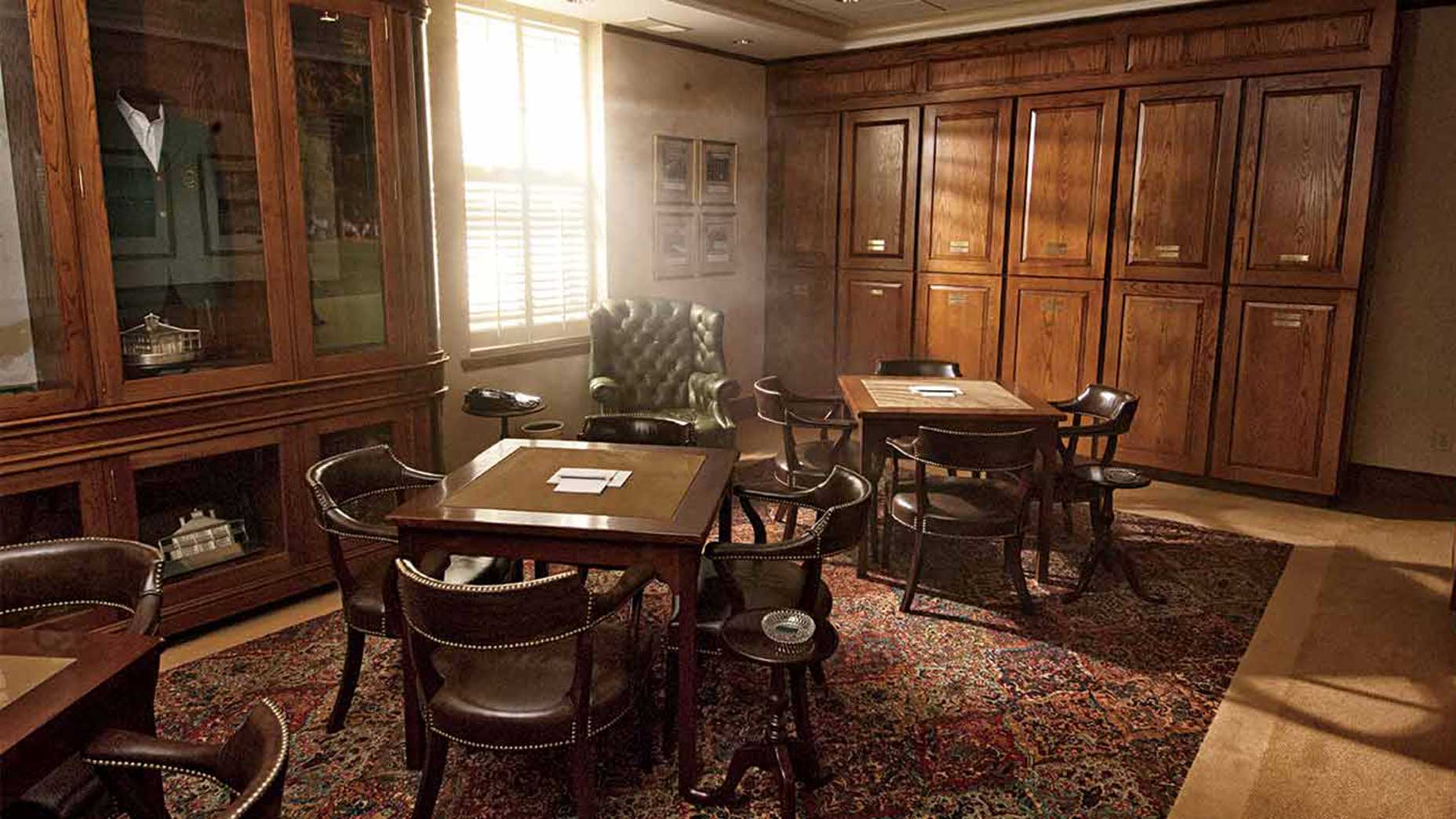15 things you didn’t know about Augusta National
- Share on Facebook
- Share on Twitter
- Share by Email

Augusta National is a guarded club in more ways than one.
Getty Images
Intensely private club. Widespread public recognition.
That’s the paradox of Augusta National. Even if you’ve never set foot on the grounds, you feel as if you know the place after watching the Masters for so many years.
But the tournament, as presented to the public, is not at all the same as Augusta National, the course and club, both of which go to great lengths to keep their secrets secret — so much so that every shred of information that spills outs feeds our appetite for more.
In the spirit of curiosity (OK, yeah, and click bait), GOLF.com asked a group of golf industry veterans who are well-acquainted with the home of the Masters to share anecdotes and fun facts about the property that don’t show up routinely in headlines or social media feeds.
(This is an updated version of an article that originally ran in 2020.)
You need more than a corkscrew to open the wine
An elevator in the clubhouse takes you underground to Augusta National’s famously expansive wine cellar, but it doesn’t get you access to the collection itself. The cellar is protected by an infrared thumbprint lock that only the sommelier and a select few others can open. Think of it as James Bond meets Bordeaux.
5 off-limits places at Augusta National you want to see (but can’t)By: Josh Berhow
There’s a new item on the dress code
No shorts. No denim. No untucked shirts. Proper golf attire has always been required at Augusta National. In recent years, though, a new rule is said to have been added to the dress code, presumably as a safeguard against hipster fashions: absolutely positively no five-pocket pants.
The water hazards are an angler’s dream
As an Augusta National member who happened to occupy the Oval Office, Dwight D. Eisenhower had a lot of pull — just not enough to persuade the club to remove a pine tree that came to bear his name. He was more successful with another push. As the story goes, in 1949, Eisenhower suggested that the club dam the small pond between the 8th and 9th holes on the par-3 course, and then-club chairman Clifford Roberts obliged. The resulting body of water, known as “Ike’s Pond,” doubles as a popular fishing hole, teeming with populations of (presumably) stocked large-mouth bass and sunfish. Sam Snead was fond of casting his line there. So was Andy Bean, who years ago told GOLF Magazine that he once landed a seven-and-a-half pound bass along the pond’s bank.
It hosts yet another prestigious event
No, not the Augusta National Women’s Amateur, though that carries plenty of cachet. We’re talking about an tournament called SCAPS, an annual competition that rotates among the five prominent clubs that make up the acronym: Seminole, Cypress Point, Augusta National, Pine Valley and San Francisco Golf Club. To participate, you have to be a member of at least one of those clubs. Some of the competitors belong to all five.
The Old Course was an architectural inspiration
On television, Augusta National and the Old Course at St. Andrews could hardly look more different. But their architectural kinship runs deep. Augusta’s co-designers Alister Mackenzie and Bobby Jones were profound admirers of the Old Course and its complex strategic options, and they readily acknowledged the debt that Augusta owed to the ancient home of golf. Not all the connections are obvious. And some have grown fainter over time. But the short par-4 3rd hole is a good example, with its treacherous plateau green that Jones himself once compared to “that perilous little plateau on the 12th at St. Andrews.”
The back nine was the front nine in the first Masters
At the inaugural Masters in 1934 (a tournament initially known as the Augusta National Invitational), the nines were flipped, with current holes 10 through 18 playing as the front side, and the current front side playing as the back. The following year, that order was reversed and has remained that way ever since.
It was used as a war-time cattle farm
You’d never call Augusta National a cow pasture. But from 1942 to 1945, its grounds were transformed into a cattle farm before turning back into the home of the Masters in time for the tournament in 1946.
And the record for most consecutive birdies goes to . . .?
In the tournament itself, Tiger Woods and Steve Pate share the mark, at seven. Both birdied holes 7 through 13. But a golf clap also goes to the late Dr. Val Hastings, an Augusta National member, who matched that record in casual play by birdieing holes 10 through 16. He bogeyed 18 to shoot a 30 on the inward nine.
Bill Gates once had to stay at budget motel
There are more than 100 beds at Augusta National, but they fill up quickly when the club hosts big to-dos, and priority goes to members with the most seniority. Years ago, during a member-member tournament known as The Jamboree, newly inducted green jacket Bill Gates was too low on the list to land on-site lodging. The multibillionaire was seen that week checking into the local Red Roof Inn.
No one is above the rules
Club rules prohibit Augusta National members from wearing their green jackets off property. No exceptions. This stricture was apparently forgotten (or taken lightly) some years ago by a longtime member, who was seen sporting his jacket out on the town. Did he get a warning letter? A firm rebuke? We can’t say for sure. But, according to our sources, he did receive a crisp slap on the wrist. At the next Masters, when volunteer duties were handed out, the member was assigned to trash collection.
There’s a private viewing room
Above the pro shop is a mini-apartment/crash pad where members often hang out during the tournament, enjoying views of the opening hole and the 9th green.
It’s vegan-friendly
The clubhouse dinner menu at Augusta National showcases classic American cuisine, much of it tilting toward southern staples such as fried chicken and country ham. But the cooking more than keeps up with the times. There is, for instance, a vegetarian menu, and if a traditional sirloin isn’t to your taste, not to worry. How about a vegan cauliflower steak?
The Eisenhower… desk
His namesake tree on the 17th is gone. But President Eisenhower’s desk remains. It’s upstairs in the library, with the same dial phone that Ike used sitting on top.
There are cameras in the trees
Not TV cameras. Well-camouflaged security cameras, both conventional and infrared, the better to keep watch around the clock. Not only that, the Augusta National chairman can access the real-time footage from anywhere on his cellphone. Former club chairman Billy Payne was reportedly fond of using the technology to check for any dress-code violations on the course.
It’s a bridges and tunnels kind of place
You know about the footbridges. But were you aware of the tunnels — elaborate network of underground passageways that allows delivery trucks and other transport to come and go unseen?
Latest In News

Josh Sens
Golf.com Editor
A golf, food and travel writer, Josh Sens has been a GOLF Magazine contributor since 2004 and now contributes across all of GOLF’s platforms. His work has been anthologized in The Best American Sportswriting. He is also the co-author, with Sammy Hagar, of Are We Having Any Fun Yet: the Cooking and Partying Handbook.










